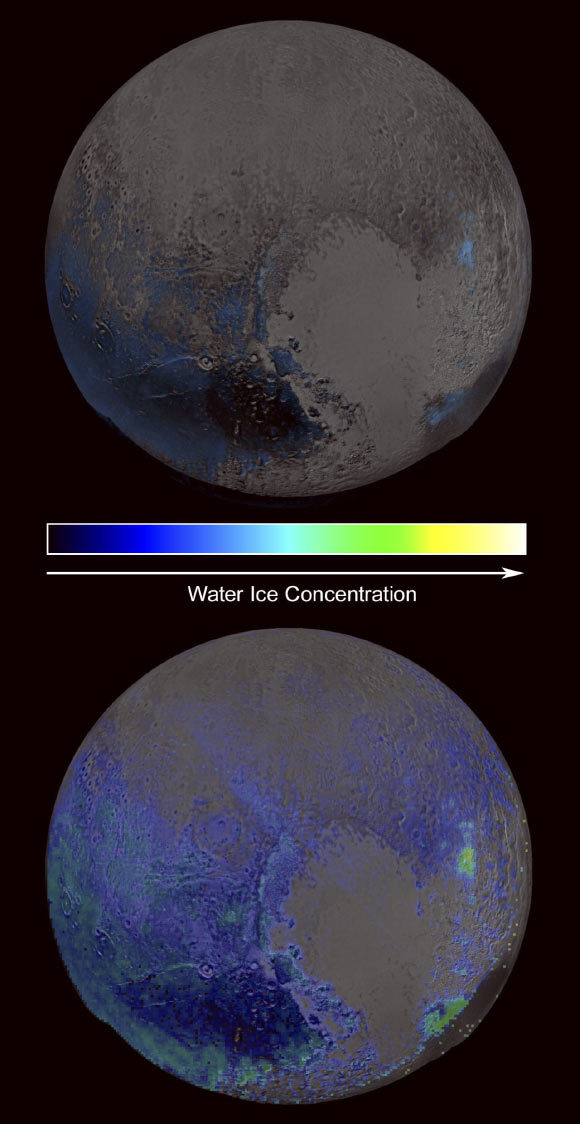NASA’s New Horizons science team used data from the Ralph/Linear Etalon Imaging Spectral Array (LEISA) — a short-wavelength, IR, spectral imager on board the spacecraft — to estimate the amount of water ice that is present on the surface of the dwarf planet Pluto.

LEISA data point to more prevalent water ice on the surface of Pluto than previously thought. Image credit: NASA / Johns Hopkins University Applied Physics Laboratory / Southwest Research Institute.
“Water ice is Pluto’s crustal bedrock, the canvas on which its more volatile ices paint their seasonally changing patterns,” New Horizons scientists said.
Initial maps of Pluto’s water ice bedrock compared LEISA spectra with a pure water ice template spectrum, resulting in the map at the top.
A disadvantage of that technique is that water ice’s spectral signature is easily masked by methane ice, so that map was only sensitive to areas that were especially rich in water ice and/or depleted in methane.
The more sensitive method used on the bottom map involves modeling the contributions of Pluto’s water and exotic ices (nitrogen, carbon monoxide, and methane ices) all together.
The new map shows exposed water ice to be considerably more widespread across the surface of the dwarf planet than was previously known.
But despite its much greater sensitivity, the map still shows little or no water ice in Sputnik Planum (the left or western region of Pluto’s ‘heart’) and Lowell Regio (far north on the encounter hemisphere).
This indicates that at least in these regions, Pluto’s icy bedrock is well hidden beneath a thick blanket of exotic ices.
New Horizons is currently 3.3 billion miles (5.31 billion km) from Earth and 150.6 million miles (242.4 million km) beyond Pluto, with all systems healthy and operating normally.
It is on course for a close flyby of a small Kuiper Belt object, 2014 MU69, on January 01, 2019.







